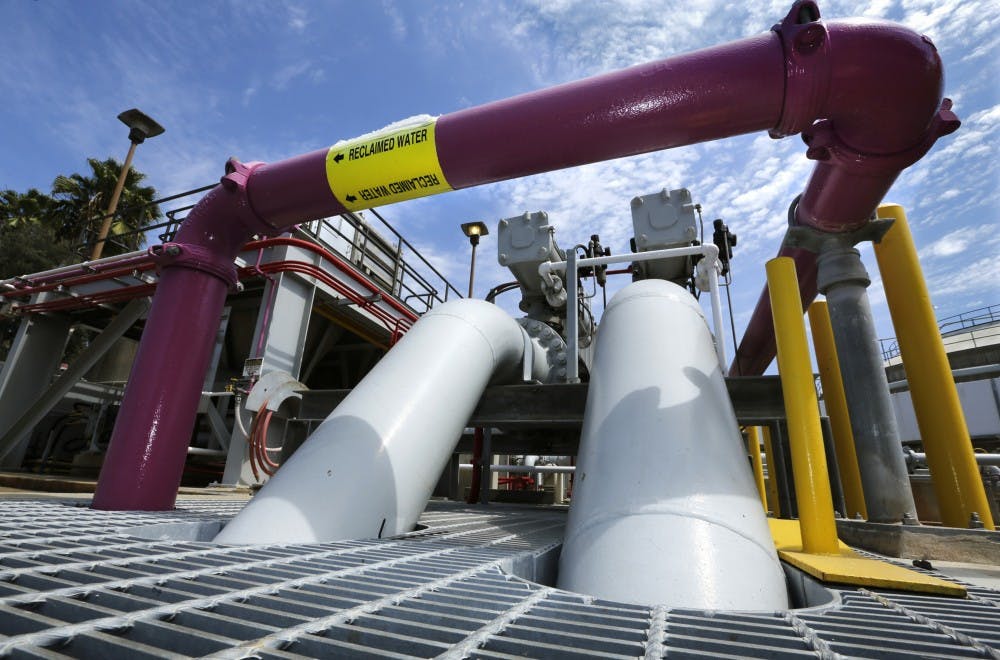New ASU research suggests that wastewater injections are causing an increase in earthquakes nationwide.
Manoochehr Shirzaei, an assistant professor from ASU's School of Earth and Space Exploration, led the project alongside geophysics researchers from other universities. Shirzaei said the core of the research addresses misconceptions surrounding wastewater injections in the oil industry and how those lead to earthquakes.
“The evidence suggests that there are many earthquakes caused by injections,” Shirzaei said.
The misconception the research hopes to rectify is that fracking, a technically different process from wastewater injections, can lead to earthquakes.
“Fracking is a very specific type of technology that isn’t used all the time,” said William Ellsworth, the research's co-author and professor of geophysics at Stanford University. “It’s used in the development of wells, but that’s not where these earthquakes are coming from.”
Rather, the evidence is suggesting that wastewater injections are the main cause for the earthquakes. Fracking, instead, is when liquid is injected into wells to force oil or gas to be released.
“This paper is about the disposal of water that in this case comes from oil field operations by injection into a deep well,” Ellsworth said. "This is the most common and most economical way of disposing of oilfield waste, not only in the United States but around the world.”
Wastewater injections are a byproduct of oil-industry operations, where the wastewater needs to be disposed of with minimal environmental impact.
“Particularly in a lot of these new places where oil is being produced, such as in northern Oklahoma or southern Kansas, they’ll get a cup of oil and a gallon of water,” Ellsworth said.
He said to think of the water as a much saltier, more ancient version of the ocean that would be very expensive and maybe even impossible to treat.
"So what is done is to dispose of it by sending it deep underground so that it isn’t going to interfere with drinking water and hopefully is out of the way," Ellsworth said.
The problem with this practice is that the injections occur frequently around deep underground faults, which can lead to earthquakes if pressure increases too much.
“The unintended consequence of doing this is that it increases the pressure that is already being felt by faults, and in some cases, if that pressure rises enough, it can cause the fault, which is otherwise stable, to slip and cause an earthquake,” Ellsworth said.
While these earthquakes are increasingly prevalent in the U.S., a solution to the problem already exists, said Shirzaei.
ASU researcher on how to make fracking safer from ASU Now on Vimeo.
“The pressure never stays high because fluid diffuses,” said Shirzaei. “And as there is a lot of fluid diffusion, pore pressure drops, and that means the stress never stays high.”
This means that if wastewater injections stop or slow down enough in a certain area with a high stress fault, the stress levels will eventually return to normal. However, Shirzaei's study states that earthquake activity can still increase shortly after injections decrease.
"Seismic activity increased even while injection rates declined, owing to diffusion of pore pressure from earlier periods with higher injection rates," he wrote in the abstract of the study.
To identify where these earthquakes were occurring and what the faults looked like, the researchers used a radar technology called InSAR.
“InSAR stands for ‘Interferometric Synthetic Aperture Radar'," Shirzaei said. "It uses radar to illuminate large areas of the Earth’s surface and then it measures changes in distance between the satellite and the ground surface.”
According to the research, now that a correlation has been established between wastewater injections and earthquakes, not changing industry practices could lead to an even higher prevalence of earthquakes.
"We look at the Midwest, and this is an area that had essentially rare occurrences of earthquakes, if any, until large volumes of wastewater began to be disposed,” Ellsworth said. “We know in Oklahoma, for example, the earthquake rating increased by more than a factor of 100.”
Shirzaei's introduction of satellite data in researching geophysics is a new approach for the field, said Ed Garnero, an ASU professor and geophysicist at the School of Earth and Space Exploration.
"He's a total innovator with methods using satellites to study how the ground deforms," Garnero said. And because of these innovations he is able to document really cool things."
Things like magma shifting under the island of Hawaii or wastewater inflating or deflating the ground level in Oklahoma, Garnero said.
"He's this kind of new breed of computational scientists that study satellite data," Garnero said.
Reach the reporter at jpleona1@asu.edu or follow @jpleonard123 on Twitter.
Like The State Press on Facebook and follow @statepress on Twitter.




